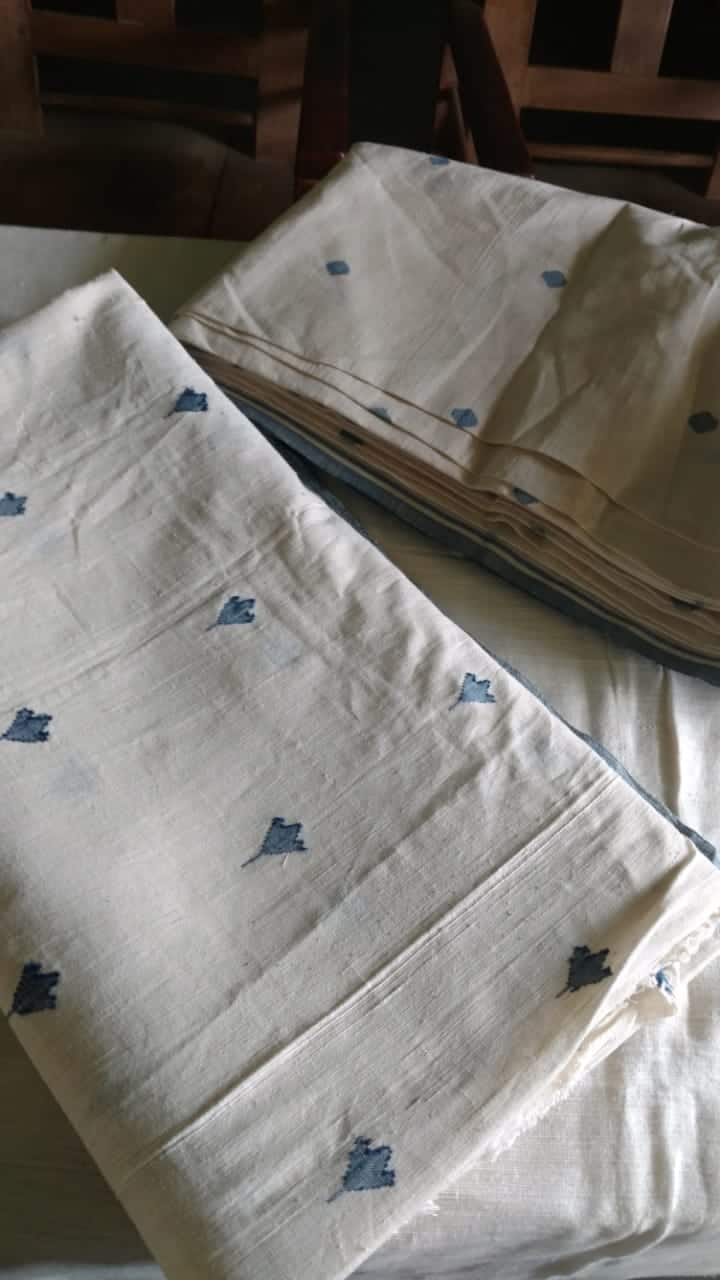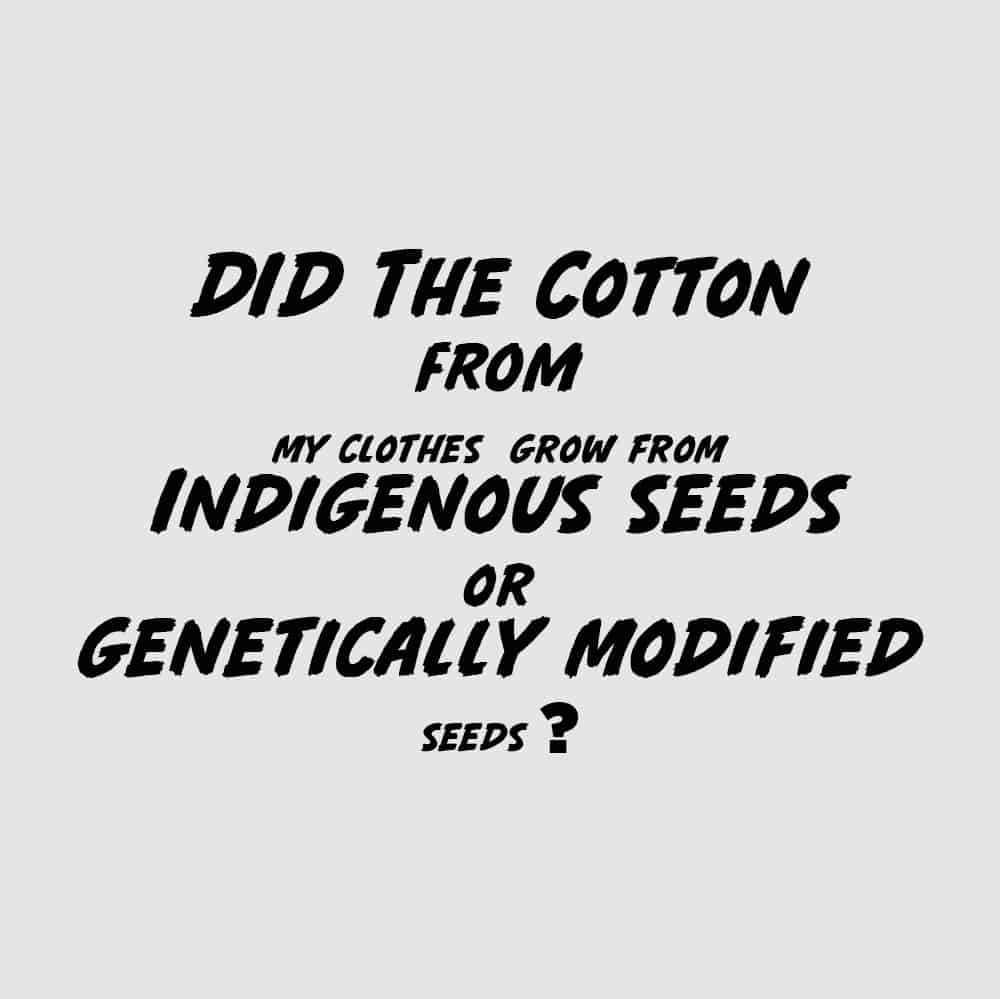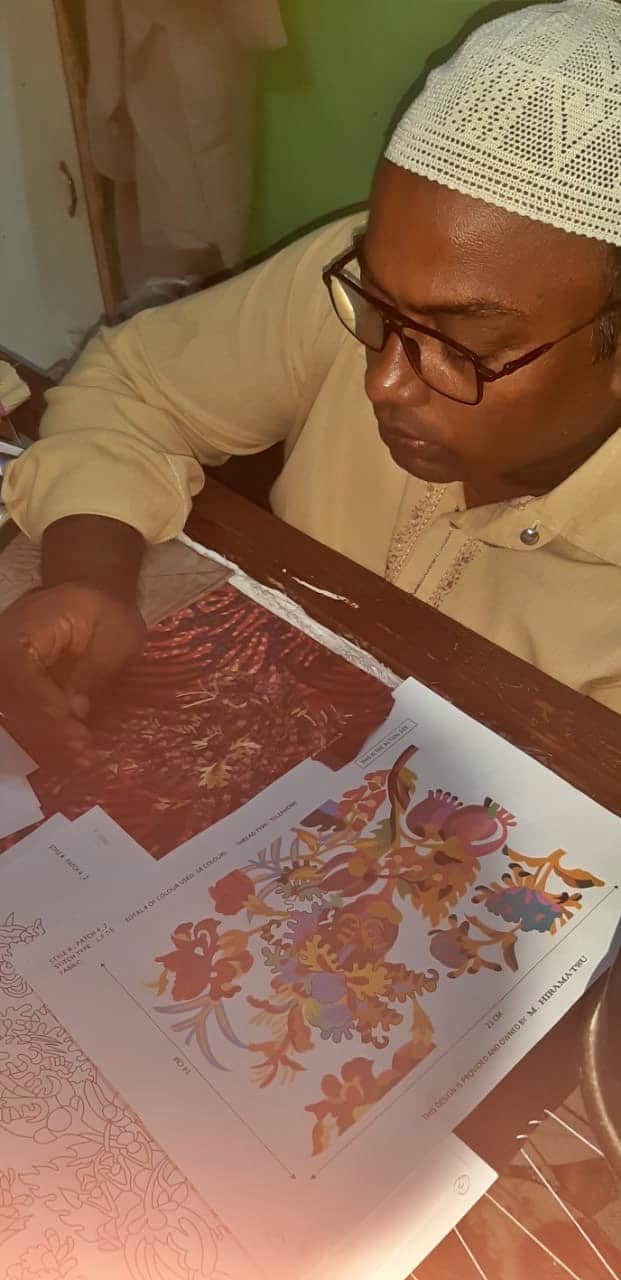04 Sep Animal Pigments – the History of extraction of beautiful Natural Pigments
[vc_row css_animation="" row_type="row" use_row_as_full_screen_section="no" type="full_width" angled_section="no" text_align="left" background_image_as_pattern="without_pattern" css=".vc_custom_1599375663374{padding-right: 15px !important;}" z_index=""][vc_column offset="vc_col-xs-12"][vc_column_text]THE HISTORY OF EXTRACTION OF NATURAL DYES-ANIMAL PIGMENTSCan you imagine a world where all our apparel, our interiors, the objects we use in our daily lives were a uniform white or grey? We take color so much for granted that we cannot imagine that this was the case at the dawn of humanity. As civilizations started flourishing in Asia and Egypt around 2500 BC, the human need for adornment and self-actualization asserted itself in the first use of color.25 Aug The Beautiful Indienne, A Textile Story of Switzerland
[vc_row css_animation="" row_type="row" use_row_as_full_screen_section="no" type="full_width" angled_section="no" text_align="left" background_image_as_pattern="without_pattern" css=".vc_custom_1598394250356{padding-right: 15px !important;}" z_index=""][vc_column offset="vc_col-xs-12"][vc_column_text]The Beautiful Indienne, A Textile Story of SwitzerlandI discussed my recent textile-related reads with a friend when she mentioned the book 'Indiennes - Material For A Thousand Stories". The exhibition at the Landesmuseum Zürich published this book in conjugation with their presentation.The name 'Indienne' made me curious as I have not heard of it before in relation to the calico textiles that were traded between India and Europe. I grabbed my copy right away and just finished reading it. The book examines what happened next to the beautifully printed and painted cotton story after they left the Indian shores, arrived in Europe and created a veritable storm of buying enthusiasm in Europe.13 Aug The Story of Indian Cotton
Posted at 01:25h in Artisan, Cotton Series, Culture, Earth Democracy, Farming, History, Sustainability, Technology by Nidhi Garg 0 Comments
[vc_row css_animation="" row_type="row" use_row_as_full_screen_section="no" type="full_width" angled_section="no" text_align="left" background_image_as_pattern="without_pattern" css=".vc_custom_1597860824004{padding-right: 15px !important;}" z_index=""][vc_column offset="vc_col-xs-12"][vc_single_image image="2315" img_size="full" add_caption="yes" qode_css_animation=""][/vc_column][/vc_row][vc_row css_animation="" row_type="row" use_row_as_full_screen_section="no" type="full_width" angled_section="no" text_align="left" background_image_as_pattern="without_pattern"][vc_column offset="vc_col-xs-12"][vc_empty_space][vc_column_text]The Story of Indian Cotton: As we enter the sixth month of the pandemic I sit in disbelief, bewildered at the might of the virus- something that has incredible power but molecularly so small. This destructive virus almost feels like prescience as I consecutively write about how mankind has manipulated the existence of indigenous cottonseed, another ‘small’ yet ‘mighty’ being of nature. The Discovery of Indian Cotton
22 May Khadi or Khaddar- How is khadi philosophy applicable today
Posted at 21:57h in Culture, Farming, History, Perspective, Sustainability, Technique by Nidhi Garg 0 Comments
[vc_row css_animation="" row_type="row" use_row_as_full_screen_section="no" type="full_width" angled_section="no" text_align="left" background_image_as_pattern="without_pattern" css=".vc_custom_1590199058732{padding-right: 20px !important;}" z_index=""][vc_column offset="vc_col-xs-12"][vc_single_image image="2023" img_size="full" add_caption="yes" qode_css_animation=""][/vc_column][/vc_row][vc_row css_animation="" row_type="row" use_row_as_full_screen_section="no" type="full_width" angled_section="no" text_align="left" background_image_as_pattern="without_pattern" css=".vc_custom_1590199066242{padding-right: 20px !important;}" z_index=""][vc_column offset="vc_col-xs-12"][vc_column_text]Khadi or Khaddar- How is Khadi philosophy applicable todayMy husband and I transition our day into relaxation and nostalgia by binge watching motion series adaptation of R. K. Narayan’s book ‘Malgudi days’ . Short stories from a small village exuding the zeitgeist of pre-independence India- reminiscent of my grandmother’s beautiful stories. In one particular episode of Malgudi days, the whole village organizes a bonfire to burn their ‘English’ clothes.. The story belongs to a time when Indian's were encouraged to keep only ‘khadi’ or ‘khaddar’ clothes with them. It gives the audience a glimpse of the boycott movement that was adopted to fight against the imperial rule.'Khadi’ , a material embodiment of an ideal'
In the current situation, we are witnessing the collapse of long distant supply chains and brutal financial realities. It is time that countries adopted self reliance and economic self sufficiency that was advocated by M.K Gandhi for India. Gandhi used humble Khadi as his weapon for inspiring a revolution.22 May Story of Kalamkari Artisan Entrepreneur Thilak Reddy : Art of Hand Painting the fabrics
[vc_row css_animation="" row_type="row" use_row_as_full_screen_section="no" type="full_width" angled_section="no" text_align="left" background_image_as_pattern="without_pattern" css=".vc_custom_1590196772145{padding-right: 30px !important;}" z_index=""][vc_column offset="vc_col-xs-12"][vc_single_image image="1980" img_size="full" qode_css_animation=""][/vc_column][/vc_row][vc_row css_animation="" row_type="row" use_row_as_full_screen_section="no" type="full_width" angled_section="no" text_align="left" background_image_as_pattern="without_pattern" css=".vc_custom_1590196738974{padding-right: 20px !important;}" z_index=""][vc_column offset="vc_col-xs-12"][vc_column_text]Kalamkari: The ancient art of Hand Painting the Fabric with Thilak Reddy. Thilak Reddy was introduced to us for the first time at the Santa Fe Folk Art Market, In spite of all of his talent and achievements, he is one of the most humble and hardworking people we have ever met. Thilak, 32, practices the art of hand printing the fabrics using a bamboo pen and natural dyes to achieve intricate designs. He lives with his sister and mother in Srikalahasti, that has an indelible history of India’s painted and printed cotton trade with the world. Read here. He is a second generation Kalamkari artist after his father. Thilak started practicing this craft at a very young age and has now been working for over 20 years. After graduation, he lost his father. He had no option but to take over all his father’s projects to help put food on the table.
He is a second generation Kalamkari artist after his father. Thilak started practicing this craft at a very young age and has now been working for over 20 years. After graduation, he lost his father. He had no option but to take over all his father’s projects to help put food on the table.11 May Traditional Block Printing Technique: Bagh Printing from Madhya Pradesh
[vc_row css_animation="" row_type="row" use_row_as_full_screen_section="no" type="full_width" angled_section="no" text_align="left" background_image_as_pattern="without_pattern" css=".vc_custom_1589245884464{padding-right: 20px !important;}" z_index=""][vc_column offset="vc_col-xs-12"][vc_single_image image="1888" img_size="full" alignment="center" qode_css_animation=""][vc_column_text]Bagh Printing: Traditional Block Printing Technique from Madhya Pradesh
Block printing dates back to over 2000 years ago, during Buddha’s time. The trade of printed textiles from India flourished during the medieval age and 12th century. While the Coromandel Coast boasted of Kalamkari, the states of Gujarat and Rajasthan were built on block printed textiles. These soft intricate textiles, mostly naturally dyed, built a textile tradition that is still relevant today.
My tryst with block prints began with my mother. Seeing her wear indigo prints is what I grew up with. She wore exclusively cotton, a perfect textile for the Indian climate. The madder, indigo and mustard color of these calico textiles kept the body cool and soul happy.
10 May How do you Source Sustainable Cotton
Posted at 03:08h in Cotton Series, Culture, Earth Democracy, Farming, History, Perspective, Sustainability by Nidhi Garg 2 Comments
[vc_row css_animation="" row_type="row" use_row_as_full_screen_section="no" type="full_width" angled_section="no" text_align="left" background_image_as_pattern="without_pattern"][vc_column width="1/2"][vc_single_image image="1933" img_size="large" qode_css_animation=""][/vc_column][vc_column width="1/2"][vc_single_image image="1953" img_size="large" qode_css_animation=""][/vc_column][/vc_row][vc_row css_animation="" row_type="row" use_row_as_full_screen_section="no" type="full_width" angled_section="no" text_align="left" background_image_as_pattern="without_pattern" css=".vc_custom_1589245353205{padding-right: 20px !important;}" z_index=""][vc_column offset="vc_col-xs-12"][vc_column_text]Sustainable Cotton. In 2012, when I was doing my research on traditional wisdom of food in India. I learnt about the scholar and environmental activist Vandana Shiva. I appreciate the knowledge she shared on biodiversity conservation, organic farming, the rights of farmers, and the process of seed saving. It is a good sign that the food environmentalists have started to understand the harm the food ‘industry’ has done to the soil by replacing the traditional wisdom of nurturing and growing food on farms with the modern invention of lab made, chemically manipulated foods and agricultural practices.The fashion industry should also adopt the concept of returning to “Earth Citizenship” and becoming a part of the Earth’s life cycles. The issue is that the fashion industry, with its long supply chains and numerous processes between idea generation and product development, lacks the time to develop an understanding of something as ancient and essential as cotton farming methods. The fashion industry generally places price above practices when it comes to most steps in the product development process.COTTON- A CASH CROP
16 Apr Working with Craft Communities at the Grassroots Level
[vc_row css_animation="" row_type="row" use_row_as_full_screen_section="no" type="full_width" angled_section="no" text_align="left" background_image_as_pattern="without_pattern" css=".vc_custom_1587086237872{border-right-width: 1px !important;padding-right: 30px !important;border-right-color: #000000 !important;border-right-style: solid !important;}" z_index=""][vc_column offset="vc_col-xs-12"][vc_single_image image="1718" img_size="1000x800" qode_css_animation=""][/vc_column][/vc_row][vc_row css_animation="" row_type="row" use_row_as_full_screen_section="no" type="full_width" angled_section="no" text_align="left" background_image_as_pattern="without_pattern" css=".vc_custom_1587086258338{border-right-width: 1px !important;padding-right: 30px !important;border-right-color: #000000 !important;border-right-style: solid !important;}" z_index=""][vc_column offset="vc_col-xs-12"][vc_separator type="normal"][/vc_column][/vc_row][vc_row css_animation="" row_type="row" use_row_as_full_screen_section="no" type="full_width" angled_section="no" text_align="left" background_image_as_pattern="without_pattern" css=".vc_custom_1587676433480{border-right-width: 1px !important;padding-right: 30px !important;padding-left: 20px !important;border-right-color: #000000 !important;border-right-style: solid !important;}" z_index=""][vc_column offset="vc_col-xs-12"][vc_column_text]Working with the Craft Communities at the Grassroots LevelMarasim was founded on the principle of “Enabling collaborations between the designers and the grassroots craft communities to utilize the traditional craft techniques as a medium of design innovation for luxury. And to help with the longevity of traditional crafts while providing for the livelihood of grassroots artisan communities’’ Over the past 6 years of our operations, the most commonly asked question to us is- What is Grassroots? Is it a place? A rural place? Or is it people? People with limited means? Or is it people with limited means living in rural places? In this article we will explore who we call our Grassroots community and how we collaborate/work with them while taking care of their well being once they become a part of our craft supply chain.The following points describe what Grassroots means to Marasim –1) Migration of craft workers to the cities with lucrative opportunities.
The cost of living in these cities is high. Therefore, these cities do not guarantee, a dignified standard of living in return for artisan’s skill, hard work and sacrifices.15 Apr Meet our Master Embroiderer Mohd Gulzar Ansaari
Posted at 18:27h in Artisan, Culture, Embroidery Series, Perspective, Sustainability, Technique by Nidhi Garg 5 Comments
[vc_row css_animation="" row_type="row" use_row_as_full_screen_section="no" type="full_width" angled_section="no" text_align="left" background_image_as_pattern="without_pattern" css=".vc_custom_1587020762781{border-right-width: 1px !important;padding-right: 30px !important;border-right-color: #000000 !important;border-right-style: solid !important;}" z_index=""][vc_column width="1/2" css=".vc_custom_1586996033135{padding-top: 5px !important;}" offset="vc_col-xs-6"][vc_single_image image="1259" img_size="large" add_caption="yes" qode_css_animation=""][/vc_column][vc_column width="1/2" offset="vc_col-xs-6"][vc_column_text]
Gulzar Ansari working at his home atelier in Delhi
[/vc_column_text][/vc_column][/vc_row][vc_row css_animation="" row_type="row" use_row_as_full_screen_section="no" type="full_width" angled_section="no" text_align="left" background_image_as_pattern="without_pattern" css=".vc_custom_1587020671675{border-right-width: 1px !important;padding-right: 30px !important;padding-left: 10px !important;border-right-color: #000000 !important;border-right-style: solid !important;}" z_index=""][vc_column offset="vc_col-xs-12"][vc_separator type="normal"][vc_column_text]The opportunities to work with highly skilled artisans has always made us appreciate an idea's elusive – soulful journey to a finished product. The artisans are experienced in their crafts and are also opinionated about design. We share viewpoints, laughter, and sometimes disagreements while trying to achieve a similar outcome. Marasim works with Master embroider Gulzar out of his own creative space. Thus, with time, Gulzar's workplace has become our second home, and every detail about him and how he works has become an everlasting memory. The way he uses his stained but gorgeous old teapots and always sits and works by the window sill that is always half covered with an old embroidered mesh and how we make small conversations about our families, past, hopes, and our future. These relationships are the foundation of Marasim. Our collected glints of pure gold. In these unprecedented times, we are opening up our box of stories with the hope that they will inspire some hope and smiles. Gulzaar Ansari.MEET GULZAAR ANSARI
Meet Mohd. Gulzar Ansaari an unsung hero of fashion. Gulzar is based in New Delhi, India. Having been born and brought up in Delhi, he is a true 'Delhiite.' He lives there with his siblings, wife, and kids. They are a huge family and a very talented one too. Gulzar and his family have been practicing Aari and Zardozi embroideries at their home atelier for nearly 22 years. He vividly remembers his grandfather practicing these embroideries and fondly shares the memories of his mother spending hours on the hand embroidery frame. In his own words, "All of us, brothers and sisters, grew up playing around these frames and embroideries."











